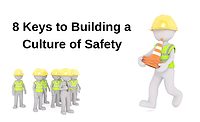Six Keys to Positive Organizational Conflict
There will be conflict, but there doesn't have to be blood.

Whenever you are dealing with people there will always be issues. Even good people have disagreements. The issue with disagreements is not in having them but in how we conduct ourselves. Professionals need to remain professional and how they disagree. Being professional doesn’t mean that at times our humanity expresses itself in negative ways, but this should be the exception rather than the norm. Conflict is not the issue.
Proactive Conflict Resolution
In times of conflict leadership has to decide whether they need to be proactive in restoration. More often than not this is better to be carried through rather than ignored. Our friends at Step Up 2 Success specialize in resources for classroom management, many of which have direct application to the workplace. A strong organizational culture will be proactive in preventing negative outbursts. A strong organization culture is not afraid of constructive conflict.
Constructive Conflict
Constructive conflict is positive. When team members are able to disagree and work through questions related to vision and value there is an energy that is conducive to progress. In being proactive an organization will establish times and places for where disagreements can occur.
Practical Conflict Boundaries
For example, if two technicians in the field have a disagreement they should understand that it would be improper to have carry that confrontation out in front of the customer. A more constructive location for conflict is to go to the truck to work through a disagreement. If the issue is escalating then those team members should dismiss themselves from the jobsite to “get lunch” or “pick up materials” so that they can work through their issue.
Management Conflict Engagement
Management should be available to assist as needed when conflict is unresolved between team members. When we hire crew members that embrace and enhance the organizational culture, these types of outbursts should be the exception rather than the norm. Our recruitment and hiring practices should be in line with our organizational values.
Organized Conflict
Weekly or monthly team meeting are a great place for team members to work through ideas as a group. If there are issues with performance, productivity or personalities, these group gatherings can be a proactive method for teaching and training on both values and well as conflict resolution. Even when we hire recruits who embrace our culture, we still need to invest in training them and developing our team around those core principles.
Rules of Conflict
When an employee observes a team member doing something wrong or incorrect, the training and culture should be such that conflict is expected. Employees should be empowered to address each other directly, this is the highest form of sustainable accountability. Depending on the severity of the infraction observed, employees should know when to notify their supervisor. If things escalate or are unresolved then supervisors should be engaged in either re-training or restoring relationships between employees.
There will be conflict. Will there be solutions? The key perspectives include distinguishing between constructive and destructive conflict. The questions those in a position of leadership must ask are, “Does the situation of resistance show someone who has made a mistake, someone who is processing the changes or someone who has decided to be an obstacle to progress?”
The most effective means of conflict resolution is to prevent conflict. Prevention measures should be built into recruiting, hiring, training and discipline for the whole organization. The goal is to clarify our vision and values and to build those into everything we do as a team. If we can be clear, we can be consistent and from consistency we can develop accountability.
The keys to success as an organization include clarity, consistency and accountability.
Looking for a reprint of this article?
From high-res PDFs to custom plaques, order your copy today!








